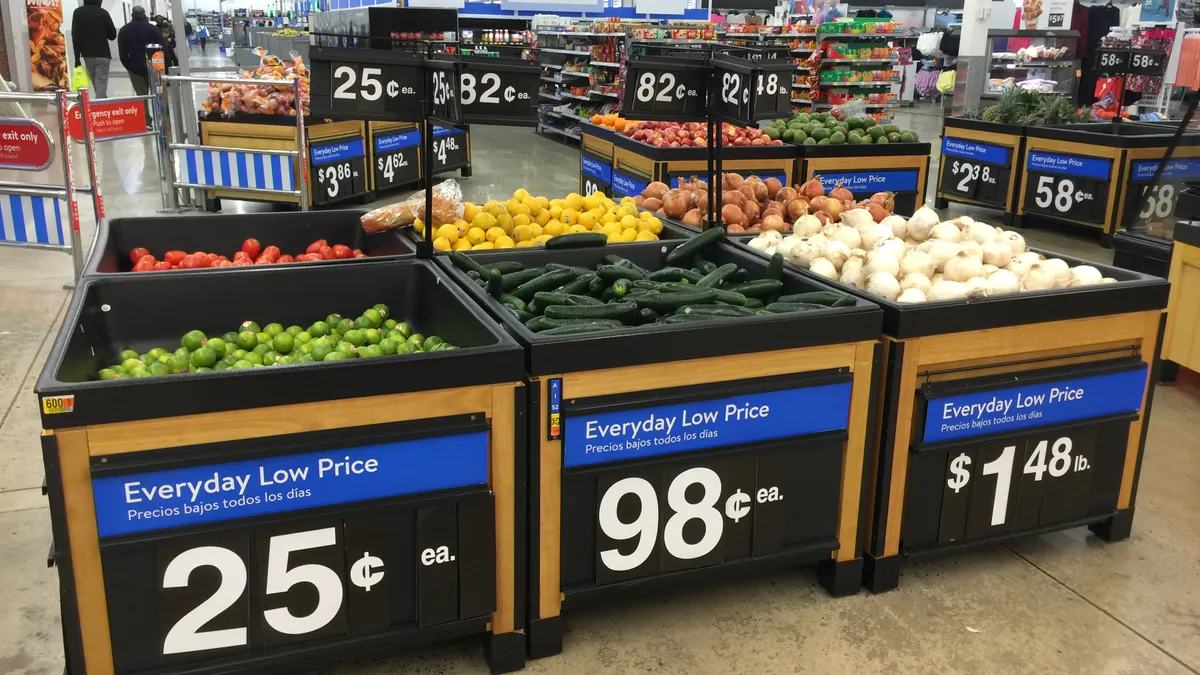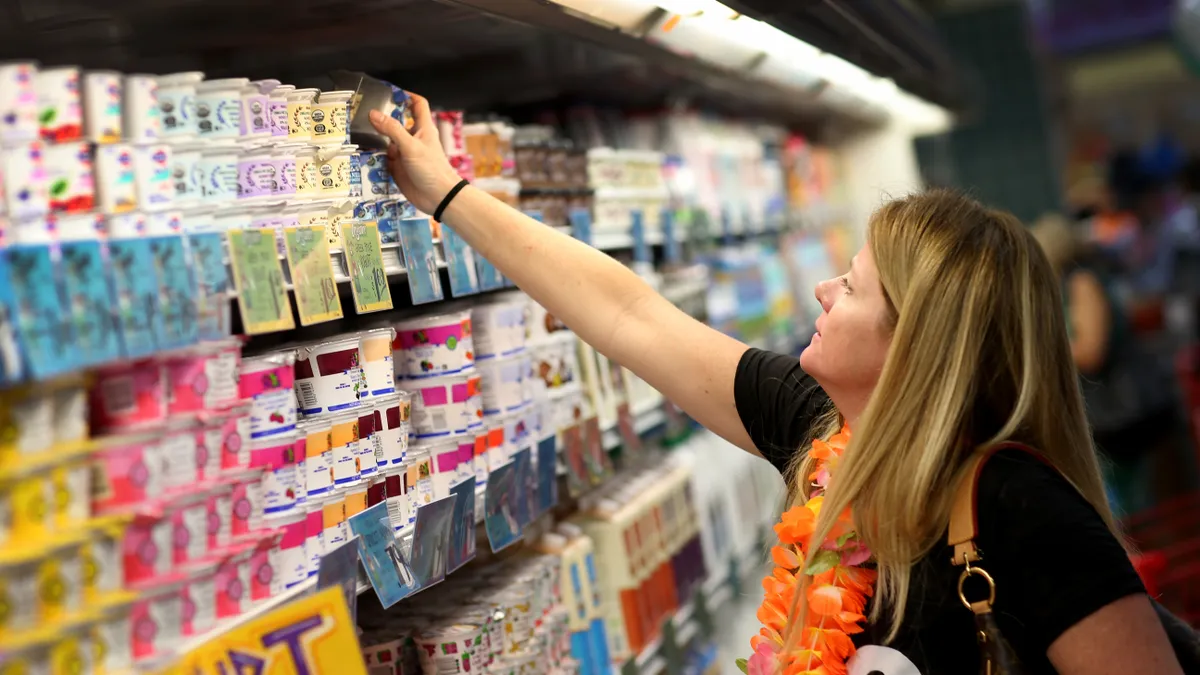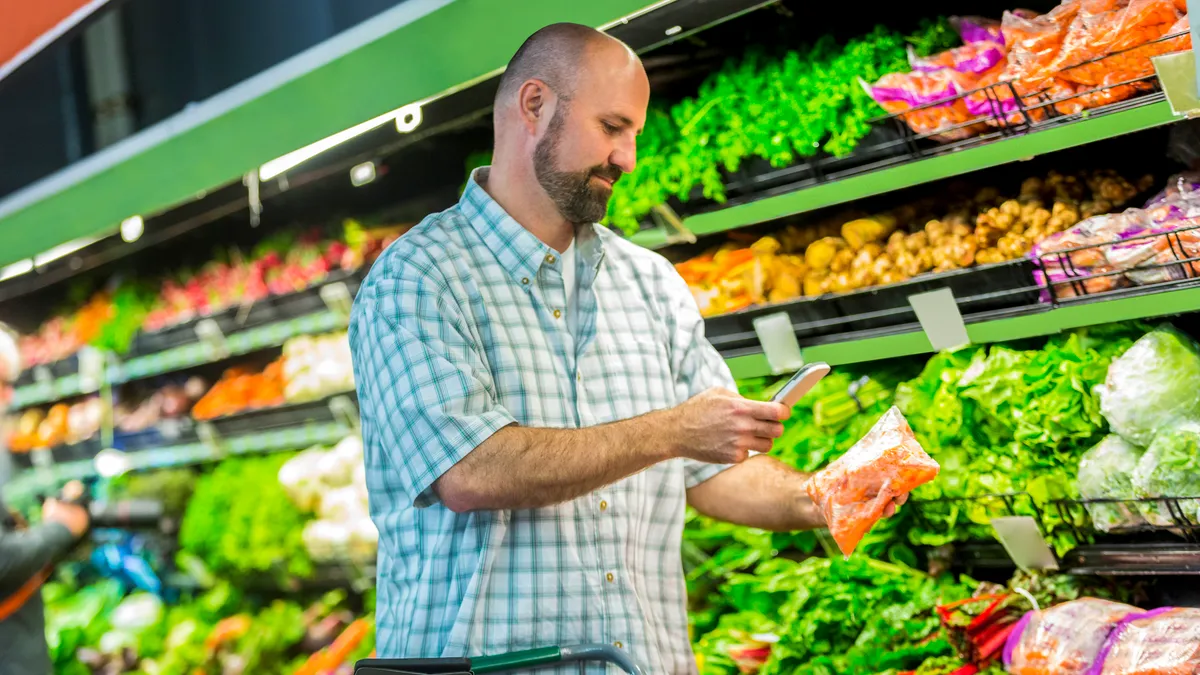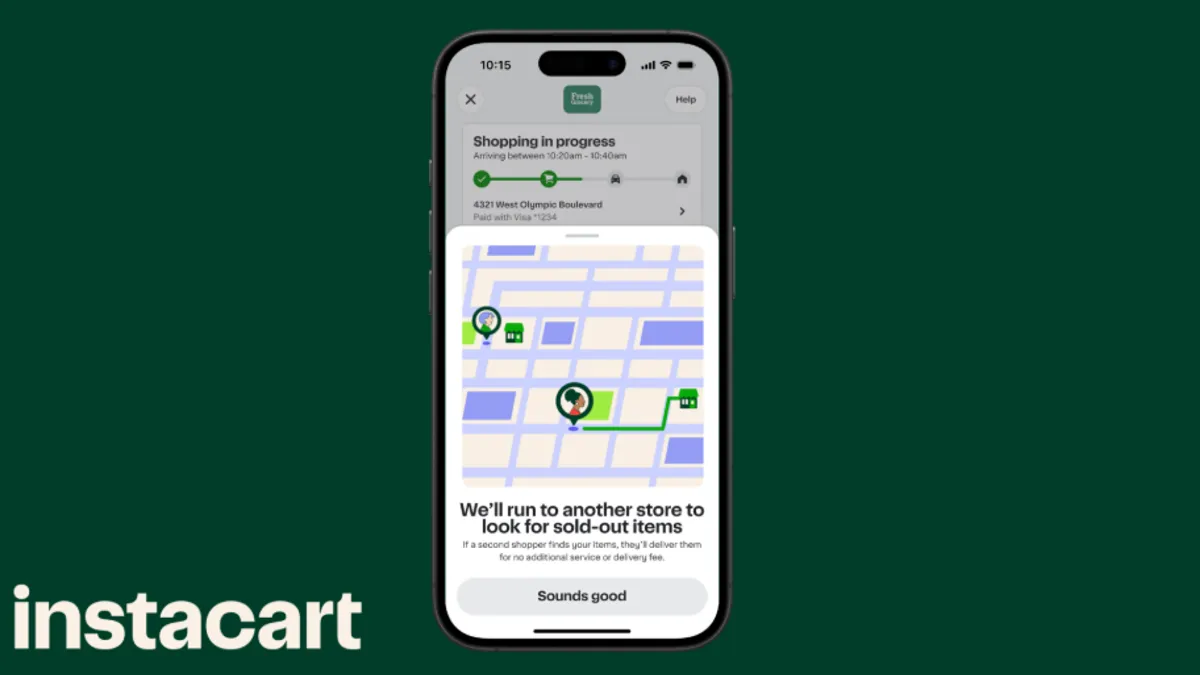Retail media in grocery hit its stride in 2022, with companies integrating new advertising technology, improving the collection of customer and CPG data, expanding networks and building out revenue streams. A few major chains, like Ahold Delhaize and Albertsons, established their own media firms while even small grocers, like Midwest regional Woodman’s Markets, joined the party.
Retail media spend eclipsed $40 billion in 2022 and is expected to push past $60 billion by 2024, according to eMarketer. As reported by the latest WARC Media analysis, global spending on retail media is expected to climb 10.1% in 2023 to $122 billion, making retail media the fastest-growing media channel.
“Every CPG brand will have retail media included in their budget in 2023, many for the first time,” said Jordan Berke, founder of Tomorrow Retail Consulting. “This is the year everyone, from an advertiser standpoint, jumps into the market.”
As 2023 progresses, retailers are ready to create more engaging content, build customer loyalty through more targeted advertisements and take ownership of the data uncovered through retail media, experts say.
At the same time, retailers and brands aren’t always on the same page, with work still to be done on improving data processing, results measurement and managing relationships long-term.
Make it entertaining
As retail media grows, grocers aim to expand beyond banner ads and sponsored searches to create more personalized, entertaining experiences that promote customer loyalty.
“You’re starting to see retailers focus more on the telling of a story and creating engaging content to tell that story that they weren’t doing before,” Anne Mezzenga, Target veteran and co-CEO of retail blog Omni Talk, said. “Retail media is just working harder, especially because the more information you get on that customer, the more you can personalize that content.”
Producing video content is one way retailers are trying to liven up brand partnerships and advertisements.
Short clips that act as shoppable videos and that highlight store offerings, products and specialty departments are increasingly finding their way onto retailers’ own websites and digital platforms, according to Jason Holland, chief business officer with Firework, a livestream and shoppable video company.
“[F]olks are coming there to actually make a purchase and convert,” Holland said. “That’s where the power of retail media is going into the future and really takes off.”
These quick videos mimic content on popular social media apps like TikTok and Instagram, and are the key to tapping into retail media that reads, not simply as an advertisement, but as entertainment, Holland noted.

As shoppable video grows to be more engaging and personalized, consumers will be encouraged to purchase new products as they can see how to best use them, according to Holland.
With retail media continuing to evolve online, it’s also beginning to reach new avenues off-site, beyond retailers’ own platforms.
“A retailer has limited inventory on its app… there are only so many folks that are on that homepage,” Berke said. “Off-site opens up the entire internet of traffic and inventory to be able to reach consumers, and by using retail media customer data and identity, you can target the patrons out there on the open internet with almost unlimited inventory and engage them in a new way.”
Connected TV (CTV) is an off-site retail media strategy gaining significant momentum among grocers, as it gives them the ability to advertise directly within streaming platforms like Netflix, Berke said. Kroger, Walmart and Albertsons have all recently announced CTV initiatives.
The video advertisements created by retailers broadcasted through CTV, in addition to hitting a larger audience, are also able to be personalized. The videos shown on a consumer’s television are based off data collected on a larger scale, showing consumers products they’ve shown interest in while shopping with the retailer, according to Berke.
In early January, Albertsons and Omnicom Media Group (OMG) announced a partnership that would focus in on connecting audience data that has not been able to be captured via CTV alone. OMG’s Omnicom Omni marking orchestration system, which tracks audience data, used alongside Albertsons Media Collective data will allow the media service division to purchase CTV advertising directly within The Trade Desk platform, per the announcement.
Digitization of retail media is also becoming more prominent within grocery aisles, influencing consumers at the point of purchase.
Earlier this month, Cooler Screens, which installs coolers doors that display advertisements and product information while collecting shopper analytics, announced it is expanding beyond the frozen and refrigerated aisles to reach store endcaps, checkout lane coolers, pharmacy screens and other areas.
With major grocers as partners — including Kroger and Giant Eagle — Cooler Screens aims to quadruple the number of screens in-stores to 40,000 total in the next 12 to 18 months, the company told Grocery Dive at the NRF Show in New York.
In-store retail media is becoming more mainstream, with grocery stores making smart carts available to shoppers and display screens showing video content seen throughout store sections. However, the benefits of in-store advertisements are not as clear-cut for retailers and may take a backseat in development compared to on- and off-site retail media, according to Berke.
“From a consumer impact perspective, in-store screens, coolers and otherwise can be really effective,” Berke said. “However, from a media business model perspective, we’re less clear it is an obvious win given some of the uncertainty around who owns it and how is that money is reflected in the [profit and loss statement].”
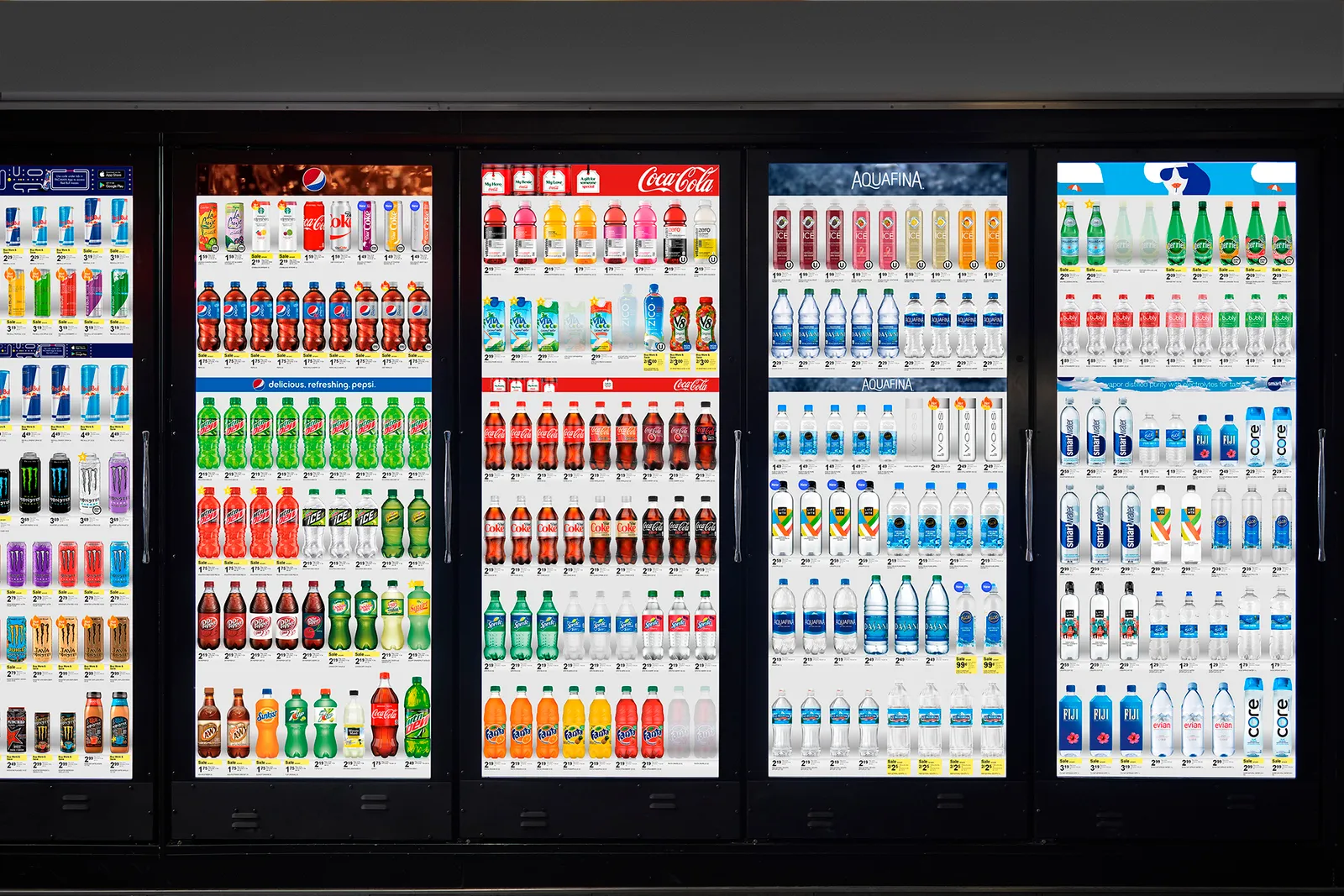
Making retail-brand partnerships work
For all the promising innovations flowing into retail media, grocers still have work to do in order to meet suppliers’ expectations for performance and measurement.
The data collected from digital advertisements allows grocers to better understand consumer buying habits while also informing operations for suppliers. As retailers establish their own media operations, however, they risk becoming overwhelmed with data to process.
For retailers with multiple brand partnerships, the data collected from retail media — which looks at consumer behavior, buying habits and in-store versus online purchasing — oftentimes comes in too quickly to be properly deciphered and redistributed to brand partners by retailers’ analysts, according to experts.
Even when data can be fully reviewed and presented to brands, each retailer has its own metrics, making it difficult for brand partners to decipher what retail media campaigns and strategies are most effective, Kristi Argyilan, Albertsons’ senior vice president of retail media, said at the NRF conference.
As more retailers build up their own retail media networks, Mezzenga predicts retail media firms will consolidate to combat the stretched-thin data collection system. Consolidation, she notes, would help streamline technology and data coming in for retail media teams.
Some grocers are taking steps to improve data collection and sharing. Albertsons is working to “move to incrementally” sharing retail media data findings with brand partners as well as giving them transparency into how the company calculates these numbers, Argyilan said during an NRF panel.
“Our measurement role feels like a false barometer of how well [a brand is] doing and especially if a client can’t compare us to somebody else,” she said.
From there, Argyilan explained that Albertsons wants “to have an API for our measuring capability that can then plug into bigger marketing mix modeling that a lot of our clients are doing.”
Albertsons has invested in a number of third-party partners in order to grow its retail media arm and experiment with new technology. However, the grocer’s ultimate goal in the coming years is to bring all retail media under its own brand, and has kept this dialogue open with media companies.
Another challenge for grocers is the pace of innovation in retail media, which advances not at the pace of retail but at the pace of media, Berke said. This means 2023 is shaping up to be the year when the divide between advanced, well-capitalized retail media ventures and smaller ones will widen considerably.
“Innovation in retail media occurs at three times the speed of e-commerce. And so the ability to keep up with advertisers’ needs is more challenging than even the core e-commerce business for retailers,” Berke said.
While technology companies like Google and Meta view retail media innovation and data processing as “old school,” it is a very new concept and reality for grocers and food retailer, Berke noted. However, with the grocery sector actively developing and focusing on this challenge, the system will improve.
“In 2020, at least half of the leading grocer CEOs would view themselves as not being in the media business,” Berke said. “Today, very few would claim they are not media businesses or don’t need to be a media business.”












